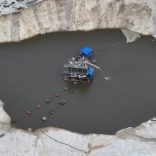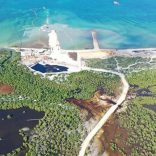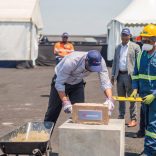Mozambique: Cahora Bassa output to increase by 90 MW
Mozambique: Chicamba dam reservoir to house a floating solar farm

File photo: Moz Outdoor Adventures
The company Eletricidade de Moçambique (EDM) plans to build a floating solar power plant with a capacity of 100 MegaWatts (MW) on the Chicamba reservoir in Manica province, in the centre of the country, according to information from the state-owned electricity company consulted by Lusa on Friday.
According to the same information, the project’s Environmental Impact Study is under public consultation until August. It will be financed by the African Development Bank (AfDB), through SEFA (Sustainable Energy for Africa).
According to information from the AfDB, the funding will amount to $2.5 million (€2.3 million) and will also support EDM in implementing a storage system for the energy produced in the project. The system will be built in the reservoir of the dam, which was built during the colonial period in the district of Sussundenga.
Last year, Mozambique had projects for 125 MW solar power stations, with 80 MW already connected to the grid.
Electricity production through solar parks in Mozambique grew by almost 14% in the first quarter of the year, but still accounts for less than 0.5% of the total, according to official figures previously reported by Lusa.
According to the budget execution report for January to March, electricity production at the country’s six large solar parks and other smaller plants totalled 19,688 MegaWatt-hours (MWh), compared to 17,328 MWh in the first three months of 2023.
Despite the growth in production, solar parks account for only 0.4% of total production in Mozambique in the first quarter, which was led by hydroelectric plants, with 84.6%, and essentially the Cahora-Bassa Hydroelectric Plant (82.2% of total electricity production up to March).
Mozambique plans to build solar power stations in at least five parts of the country by 2030, with an estimated capacity of 1,000 MW of electricity production, promising a “true solar revolution”.
“Accelerating these types of projects to a larger scale is the simplest way to solve Mozambique’s strategic dilemma after 2030: having to choose between green energy for export or supplying energy to industrial consumers,” according to the Energy Transition Strategy (ETS), reported by Lusa in February.
The new strategy, which envisages investments of around $80 billion (€73 billion) by 2050, foresees that Mozambique will develop, in a first phase, by 2030, “at least” 1,000 MW of new solar photovoltaic capacity in Dondo, Lichinga, Manje, Cuamba, Zitundo and other sites “to be identified”, and 200 to 500 MW of new onshore wind power capacity, namely in Inhambane, Lagoa Pathi.
“Large industrial investors who need large amounts of green electricity should be encouraged, through a favourable business and regulatory environment, to develop large-scale solar and wind energy projects,” the document adds.
The aim is to have at least 7.5 GW of solar photovoltaic capacity installed in Mozambique by 2050 and up to 2.5 GW of wind power capacity.
“To ensure price optimisation and accelerate the expansion of solar and wind capacity, the government should build on the Renewable Energy Auction Programme in Mozambique,” the principles of which introduced “competition in the awarding of renewable energy contracts,” the document said.
“The rapid growth of solar expansion in South Africa following the introduction of auctions is a regional example to follow,” emphasises the ETS, which also stresses “long-term” initiatives.
A true “solar revolution” will be needed to meet Mozambique’s growing consumption cleanly,” the document stated.












Leave a Reply
Be the First to Comment!
You must be logged in to post a comment.
You must be logged in to post a comment.